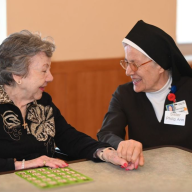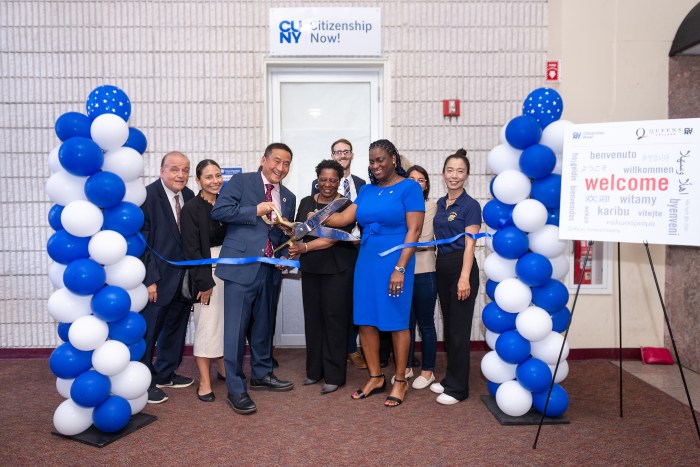By Alexander Dworkowitz
Just a half block away from the honks of Northern Boulevard, a two-story, bright-pink Victorian home sits on Murray Hill’s 38th Avenue.
Sporting curtains, mirrors and furniture dating back to the 19th century as well as a garden and a bird sanctuary, the house now known as the Voelker Orth Museum offers a center of tranquility.
“I consider the museum an oasis, an oasis of preserving the past,” said Catherine Abrams, its director. “We tried to reconstruct a slower pace of life.”
On Sunday, the Voelker Orth Museum at 149-19 38th Ave. officially opened to the public.
The museum attempts to recreate a typical home in Murray Hill during the Victorian era.
In 1995, Elisabetha Orth, who had lived in the house since 1930, died, leaving the home empty.
Orth willed the estate to the Queens Historical Society, Queens Botanical Garden and the Theodore Roosevelt Sanctuary of the National Audubon Society in Oyster Bay, L.I.
The three organizations formed a nine-member foundation to manage the estate of the house, working to fulfill Orth’s wish to transform it into a museum.
At the time of Orth’s death, the house looked nothing like it does today. It was covered in aluminum siding, and the old carriage house, now used as the bird sanctuary, was falling apart.
“It was really dilapidated,” Abrams said.
At its unveiling, the house seemed as good as new, in excellent condition compared with many of the other historic homes in the borough that suffer from a lack of funding.
The house was constructed shortly after the Murray Hill railroad station opened in 1889, said James Driscoll, the home’s historian and vice president for history at the Queens Historical Society.
“This is the beginning of suburbia,” Driscoll said. “The beginning of suburban communities were not out on the island, but in Flushing, Richmond Hill and Douglaston.”
In 1899, a German immigrant named Conrad Voelcker purchased the home. Voelcker was a successful publisher who printed a German-language newspaper. In recent years, the Voelcker family name was Americanized, and the “c” was dropped.
When Voelcker died in 1930, the house was turned over to his daughter, Theresa; her husband, Rudolph Orth; and their daughter, Elisabetha.
The house depicts life at the end of the 19th century. A period room contains dolls and a bed typical of the Victorian era, while the parlor has a grand piano and a portiere, a heavy curtain designed to keep in the heat.
Many of the museum’s most valuable pieces, including a carved tree mirror, are near the entrance.
“The entrance in Victorian times is very important,” Abrams said. “As soon as you entered the house, you knew their societal status, their wealth and their education.”
In addition to the exterior of the home, much of the interior is also painted a bright pink. The prevalence of the color was typical of the time, Abrams said.
“In the Victorian era, the Victorian houses were called pink ladies,” she said. “Colors were very bright.”
Driscoll described the museum as one old piece of Flushing “being saved.”
“Murray Hill used to be filled with Victorian homes like this,” he said. “Most are now gone.”
The hours of the museum will officially be set in July. As of now, admission is a suggested donation of $2. Call 718-359-6227 for information.
Reach reporter Alexander Dworkowitz by e-mail at Timesledger@aol.com or call 718-229-0300, Ext. 141.

































